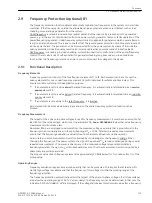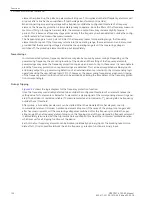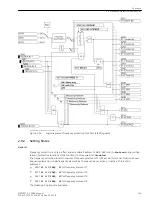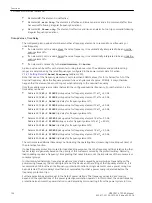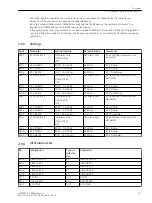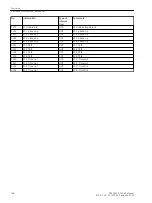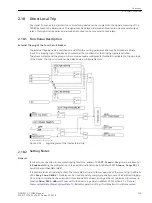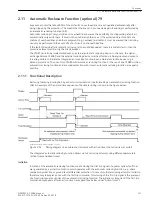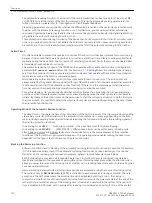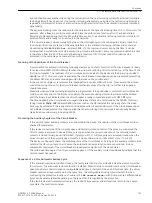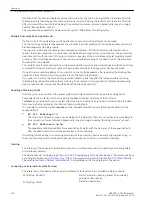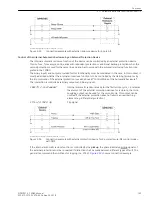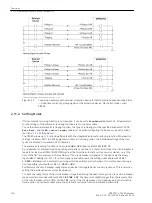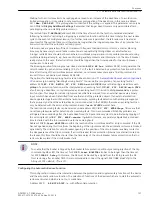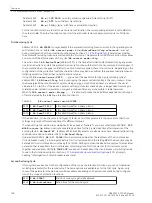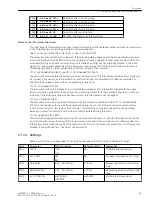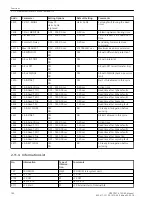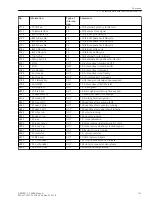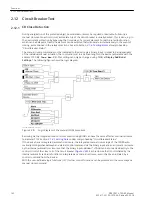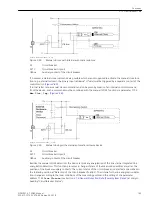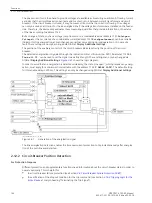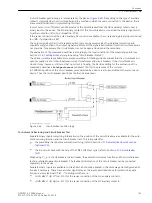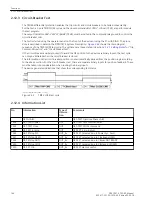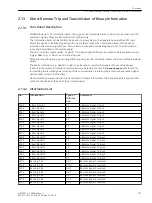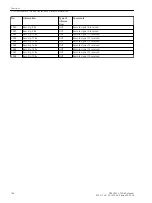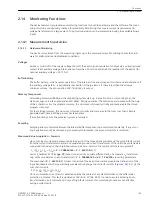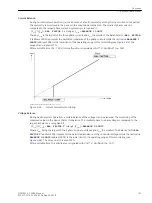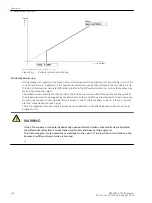
Waiting for the circuit breaker to be ready again can lead to an increase of the dead times. To avoid uncon-
trolled prolongation, it is possible to set a maximum prolongation of the dead time, in this case in address
3411
Max. DEAD EXT.
. This prolongation is unlimited if the setting ∞ is applied. This parameter can only be
set in DIGSI at Display Additional Settings. Remember that longer dead times are only permissible after 3-
pole tripping when no stability problems occur.
The restraint time
T-RECLAIM
(address 3403) is the time after which the fault is considered eliminated
following “successful” reclosing. Re-tripping by a protective function within this time initiates the next reclose
cycle in the event of multiple reclosure; if no further reclosure is permitted, the last reclosure is treated as
unsuccessful. The restraint time must therefore be longer than the longest response time of a protective func-
tion which can start the automatic reclosing circuit.
A few seconds are generally sufficient. In areas with frequent thunderstorms or storms, a shorter blocking
time may be necessary to avoid feeder lockout due to sequential lightning strikes or cable flashovers.
A longer restraint time should be chosen where circuit-breaker supervision is not possible (see above) during
multiple reclosing attempts, e.g. because of missing auxiliary contacts and information on the circuit-breaker
ready status. In this case, the restraint time should be longer than the time required for the circuit-breaker
mechanism to be ready.
The blocking duration following manual close detection
BLOCK MC Dur.
(address 3404) must guarantee the
circuit breaker to open and close reliably (0.5 s to 1 s). If a fault is detected by a protection function within this
time after closing of the circuit breaker was detected, no reclosure takes place and a final trip command is
issued. If this is not desired, set address 3404 to 0.
The options for handling evolving faults are described in Section
2.11 Automatic Reclosure Function (optional)
under margin heading “Handling Evolving Faults”. You can define recognition of an evolving fault at
address 3406
EV. FLT. RECOG.
.
EV. FLT. RECOG.with PICKUP
means that during a dead time each
pickup of a protection function will be interpreted as an evolving fault. With
EV. FLT. RECOG.with TRIP
a fault during a dead time is only interpreted as an evolving fault if it has led to a trip command by a protec-
tion function. This may also include trip commands which are received from an external device via a binary
input or which have been transmitted from another end of the protected object. If an external protection
device operates together with the internal auto-reclosure, evolving fault detection with pickup presupposes
that a pickup signal from the external device is also connected to the 7SD80; otherwise an evolving fault can
only be detected with the external trip command even if
with PICKUP
was set here.
The reaction to evolving faults can be selected under address 3407.
EV. FLT. MODE
Stops 79
means that
no reclosing takes place after detection of an evolving fault. This is recommended if stability problems are
anticipated when reclosing after the 3-pole dead time. If a 3-pole reclose cycle is to be initiated by tripping of
the evolving fault, set
EV. FLT. MODE
=
starts 3p AR
. In this case, a separately adjustable 3-pole dead
time is started with the trip command due to the evolving fault.
Address 3408
T-Start MONITOR
monitors the reaction of the circuit breaker after a trip command. If the CB
has not opened during this time (from the beginning of the trip command), the automatic reclosure is blocked
dynamically. The criterion for circuit breaker opening is the position of the circuit-breaker auxiliary contact or
the disappearance of the trip command. If a circuit-breaker failure protection (internal or external) is used on
the feeder, this time should be shorter than the time delay of the circuit-breaker failure protection so that no
reclosure takes place if the circuit breaker fails.
i
i
NOTE
To enable that the busbar is tripped by the breaker failure protection without preceding injection of the trip
command (by AR or BF), the time set for 3408
T-Start MONITOR
also has to be longer than the time set
for 3906
50BF-2 Delay
. In this case, the AR must be blocked by a signal from the BF to prevent the AR
from reclosing after a busbar TRIP. It is recommended to connect the signal 1494
50BF BusTrip
to the
AR input 2703
>BLOCK 79
via CFC.
Configuring the Automatic Reclose Function
This configuration concerns the interaction between the protection and supplementary functions of the device
and the automatic reclosure function. The selection of functions of the device which are to start the automatic
reclosure circuit and which are not to, is made here.
Address 3420
AR WITH DIFF
, i.e. with differential protection
Functions
2.11 Automatic Reclosure Function (optional) 79
SIPROTEC 4, 7SD80, Manual
137
E50417-G1100-C474-A2, Edition 02.2018
Содержание SIPROTEC 4 7SD80
Страница 8: ...8 SIPROTEC 4 7SD80 Manual E50417 G1100 C474 A2 Edition 02 2018 ...
Страница 10: ...10 SIPROTEC 4 7SD80 Manual E50417 G1100 C474 A2 Edition 02 2018 ...
Страница 18: ...18 SIPROTEC 4 7SD80 Manual E50417 G1100 C474 A2 Edition 02 2018 ...
Страница 248: ...248 SIPROTEC 4 7SD80 Manual E50417 G1100 C474 A2 Edition 02 2018 ...
Страница 298: ...298 SIPROTEC 4 7SD80 Manual E50417 G1100 C474 A2 Edition 02 2018 ...
Страница 312: ...312 SIPROTEC 4 7SD80 Manual E50417 G1100 C474 A2 Edition 02 2018 ...
Страница 322: ...322 SIPROTEC 4 7SD80 Manual E50417 G1100 C474 A2 Edition 02 2018 ...
Страница 400: ...400 SIPROTEC 4 7SD80 Manual E50417 G1100 C474 A2 Edition 02 2018 ...
Страница 402: ...402 SIPROTEC 4 7SD80 Manual E50417 G1100 C474 A2 Edition 02 2018 ...

